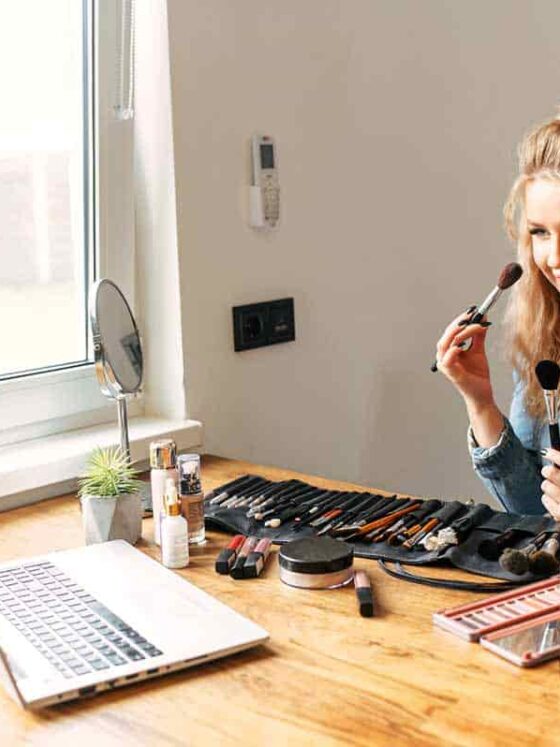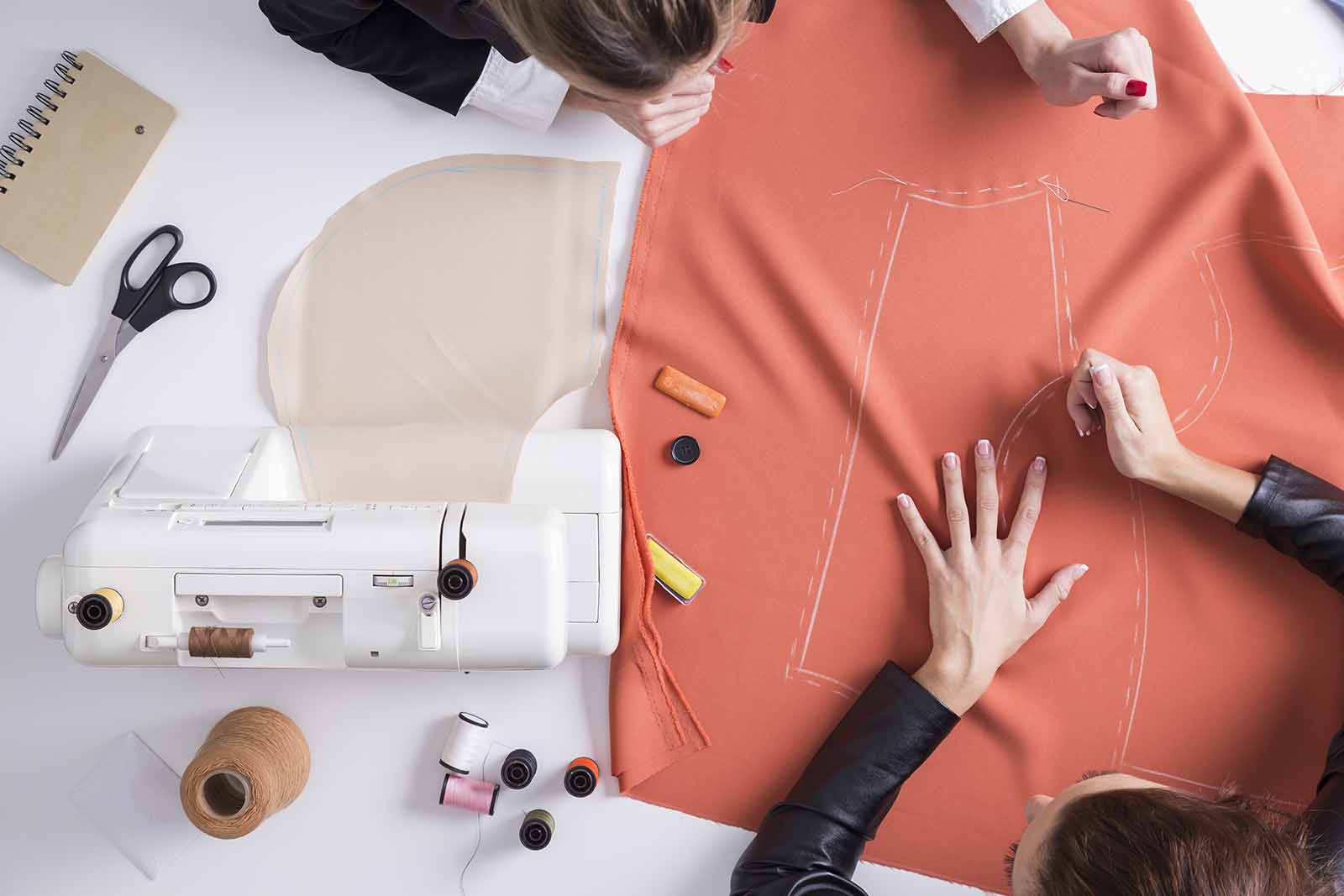Fashion Definitions: What Is Fashion Merchandising?

Many people have heard of fashion designers, but have you ever heard of fashion merchandising? Fashion merchandising is a field that may be tempting for people interested in fashion design but don’t have any skills in sewing or concept art.
Fashion merchandising is the practice of managing fashion distribution as new clothing lines are put on the market. Fashion merchandisers market new fashion lines, purchase new brands, and drive profits in the clothing industry. Fashion merchandisers also organize the launch of new fashions.
Even if you don’t have the skills to be a fashion designer, that doesn’t mean you can’t have a successful career in the fashion industry. Keep reading to learn more about the ins and outs of being a fashion merchandiser and how to pursue fashion merchandising as a profession.
What is the Basic Concept of Fashion Merchandising?
Fashion merchandising differs from fashion design. Fashion merchandising deals with the distribution and sales of fashion after it is produced. Fashion designers are the ones who produce it. Fashion merchandisers are an important part of the clothing industry since they help determine which fashion brands get purchased and distributed.
These are the three main functions of fashion merchandisers:
- Planning/promotion: Fashion merchandisers are in charge of planning fashion brand launches in both boutiques and major department stores. Fashion merchandisers plan what time of year each fashion line will be bought, sold, and distributed. Many are also involved with the promotion of brands after launch.
- Fashion business: While fashion designers are in charge of the creative end of the industry to generate new fashions, fashion merchandisers are business-oriented. Fashion merchandisers maximize clothing sale profits. This involves industry analysis and savvy purchasing. Before you start your business take some guidance with these 5 tips to helping you start a fashion business.
- Networking: Fashion merchandisers have to maintain strong ties not only with vendors and clothing distribution centers like department stores, they also have to keep tabs on the fashion designers producing new brands and lines. Fashion merchandising involves staying updated on the brands already carried and planning new product launches.
This gives you an overview of how fashion merchandisers engage with the clothing industry. However, there are many other things that fashion merchandisers are responsible for that help set them aside from other people in the business.
What Does a Fashion Merchandiser Do?
A fashion merchandiser is involved in the clothing industry on several different levels. Depending on how high they are in the hierarchy of the merchandising department, they may or may not have far-reaching responsibilities when it comes to the clothing bought and sold by their company.
Most fashion merchandisers work in a team since fashion merchandising involves collaborations with multiple vendors and other businesses within the industry to get a product line distributed successfully.
Fashion Merchandisers Perform Industry Analysis
Even though fashion merchandisers aren’t typically involved directly with fashion design unless they are performing multiple roles within a small business, fashion merchandisers still have to engage with the creative side of the industry.
When fashion merchandisers make purchases before a clothing line is manufactured, their job involves predicting what fashion styles will be popular within the following fashion season and what clothing will be most profitable to sell.
Anyone who has ever gone to a discount clothing store can see how many clothing lines don’t sell well during their launch. These lines end up for sale discounted, which cuts into company profits. Merchandisers are responsible for reducing the profit loss associated with new clothing lines as much as possible by forecasting which product lines will sell best.
Fashion merchandisers make their analysis of the market based on the following:
- Runway trends: While many outfits that show up on fashion runways are not appropriate for daily wear, these same fashion trends are repeated more subtly in mass-produced clothing lines. Fashion merchandisers will use seasonal and cyclical trends from past fashion to predict what outfits will fly off the shelves next.
- Sales trends: Fashion merchandisers don’t just analyze how well the lines their company sells do. They also watch competing fashion lines to see what lands well and which promotional campaigns work well in product launches. Merchandisers may also do post-mortem analysis on product lines that sell poorly.
- Inventory levels: Fashion merchandisers use inventory levels to determine how much stock is needed in purchasing, what kind of fashion trends are selling well, and which aren’t selling at all. Merchandisers use this information to decide how much of each clothing product to buy. They also determine what sizes, colors, and patterns are bought.
Forecasting which products will sell well based on fashion trends and past sales can be one of the major factors in how much profit a clothing line ends up making. The more popular a product is, the less likely the merchandiser will lose profits on discounted stock that must be downsized to make room for next season’s offerings.
Merchandisers Work in Fashion Marketing
It’s not just predicting which clothing lines will sell well that helps merchandisers maximize the profits associated with each brand. Merchandisers also curate and promote their chosen clothing lines to ensure that they sell as well as possible.
In some cases, a merchandiser will be solely responsible for fashion marketing, and in others, they may take a secondary role to an official fashion marketer or promoter, depending on how large the purchasing company is. In either case, merchandisers can help make or break each outgoing clothing line by working with marketers to optimize each fashion launch.
These are a few of the ways that merchandisers help to market the fashion they purchase and curate for their companies:
- Promotional events and advertising: In some cases, merchandisers may work together alongside fashion marketers to help arrange promotional events. These events, such as in-store fashion shows, may be used to showcase upcoming product lines directly before or at launch.
- Displays and distribution: Along with being in charge of what clothing is going to be bought and produced, merchandisers also follow the distribution of their clothing lines to the store level. This gives them a lot of control over how well products perform.
- Curation/Planning/Logistics: Since fashion merchandisers arrange for new clothing lines to be produced and distributed at the manufacturing level, they are required to plan and coordinate with other industry workers at every level from the factory to the sales floor.
Choosing the right new fashions often isn’t enough to ensure a clothing launch success. For a new product line to be successful, fashion merchandisers have to make sure many different elements fall into place first.
What Skills Does a Fashion Merchandiser Need?
One of the challenges of being a fashion merchandiser is that this job demands a wide range of skills. While some job positions call for a subject matter expert, fashion merchandisers are more successful when they can act as a jack of all trades within the fashion industry.
Here are some of the basic soft skills that you’ll need to be a fashion merchandiser:
- Communication: Whether it’s through Zoom calls, factory tours, or sit-downs with fashion designers, communication forms a huge part of a merchandiser’s day-to-day activities. Merchandisers act as a liaison between other professionals within the manufacturing line.
- Interpersonal Skills: Having strong interpersonal skills helps fashion merchandisers smooth out any conflicts in the process of bringing fashion lines from manufacturing to distribution. Interpersonal skills also help fashion merchandisers bond more easily with vendors and fashion designers.
- Creative Design: Fashion merchandisers don’t have to be able to sew or draw patterns, but it’s a good idea for fashion merchandisers to be competent when it comes to fashion design theory. Knowing how fashion trends work makes it easier to predict which trends will become profitable in the future.
- Time Management: The timing of product launches in fashion is crucial. Fashion changes depending on the season, so it has to be manufactured at a certain pace so that each new product line launches at the right time. This prevents stores from being overstocked with merchandise they don’t need or left without merchandise.
- Organization: Managing all the steps in launching a clothing line from conception to distribution requires intense attention to detail for things like inventory numbers, dates, and information. To get a good overview of the bigger picture, a fashion merchandiser has to be able to organize this data in a way that makes it easy to analyze.
Fashion merchandising is a great job for people who have a creative frame of mind, but are still very precise in their work. It isn’t a job that is suited for everyone, but there are many people who possess the above traits who are passionate about their work.
How Much Does a Fashion Merchandiser Make?
The average fashion merchandiser makes just a little over $52,000 a year, or roughly $25/hour. The amount of money a fashion merchandiser can earn depends on how much experience they have and how high in the chain of command they are.
Merchandising managers can make closer to $60,000 a year, while those just starting out will typically make between $30,000 and $50,000. Check out these sites that shine as the best places to sell jewelry online to make some money with pieces you don’t really use.
How Do I Get Started in Fashion Merchandising?
There are a few different ways to get a start in fashion merchandising, and not all of them involve getting a fashion merchandising degree.
While a degree can help lend you credibility when you’re getting your foot in the door in the fashion industry, it is your performance once you get started that will determine your career path going forward. Many people who are talented in fashion become merchandisers based on their in-house experience rather than a fashion degree.
Other than getting a degree or professional certificate in fashion merchandising, here are a few other ways that you can get started in the fashion merchandising field
- Do an internship. Internships are a good way to get on-the-job experience in fashion merchandising, and can often lead to job offers when the internship is over. Paid internships can also be a way to learn about fashion merchandising while still making a living.
- Build a fashion merchandising portfolio. A fashion merchandising portfolio can show potential employers your industry analysis skills. It can also act as a display of your organizational and marketing skills.
- Take a fashion retail job. For many fashion designers and merchandisers, a job working with clothing on the sales floor is their first step into the world of fashion. Working in fashion retail can help give you the basic soft skills necessary to succeed later in your career as a fashion merchandiser. Take a look at these online fashion merchandising stores to find cute clothes online.
Because fashion merchandising requires experience and a bunch of different interlocking skills, it isn’t a career you can jump into. Being a good fashion merchandiser requires years of experience in analyzing fashion trends and organizing merchandise distribution.
Fashion Merchandising Is a Field for Passionate Fashionistas
Fashion merchandisers have to give a lot to their jobs, so having a passion for fashion is one of the biggest requirements of this career path. Whether you’re interested in getting into fashion at the corporate level or you want to be involved with trendy new clothing, fashion merchandising is great for people with business initiative and an impeccable sense of style.








